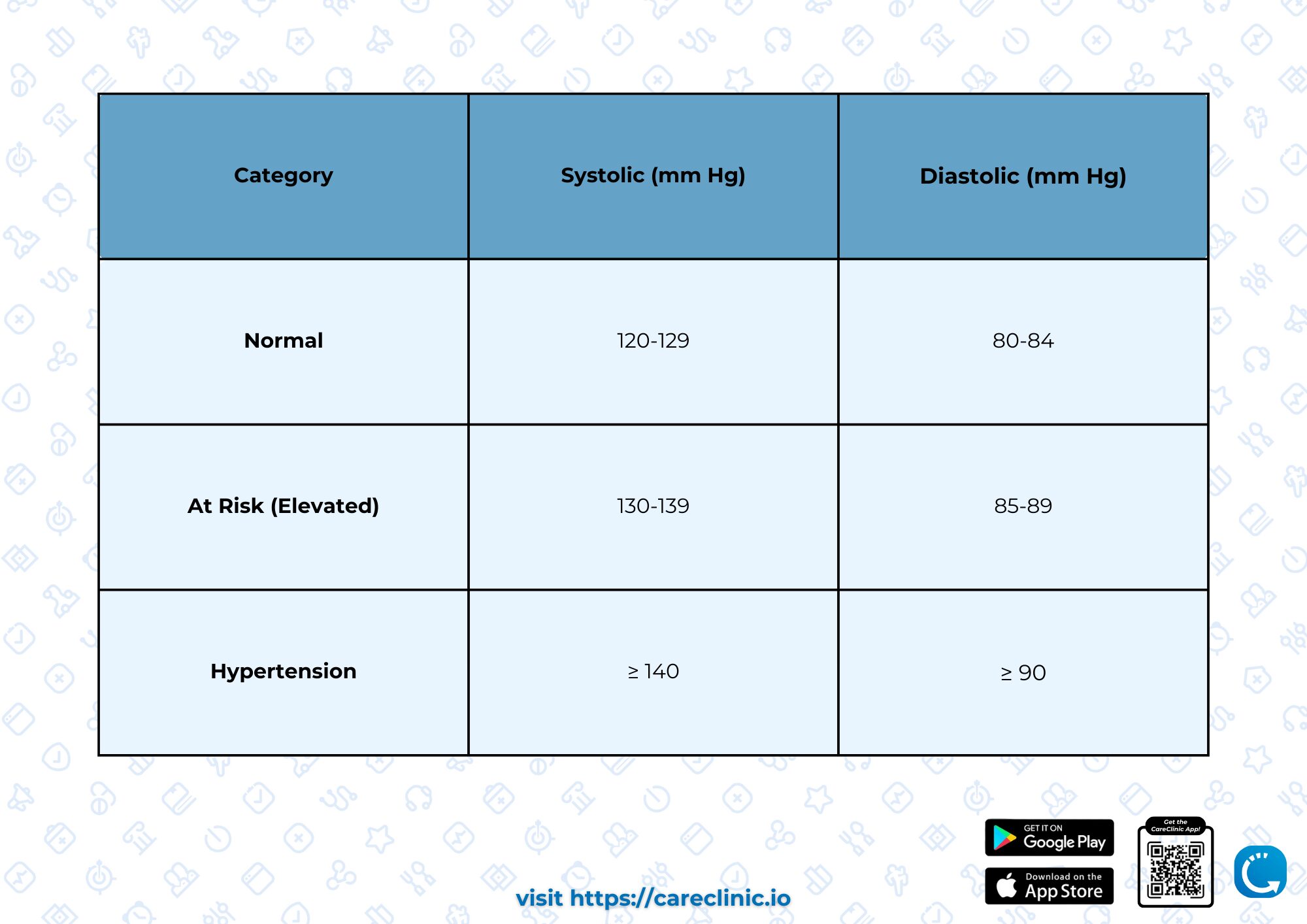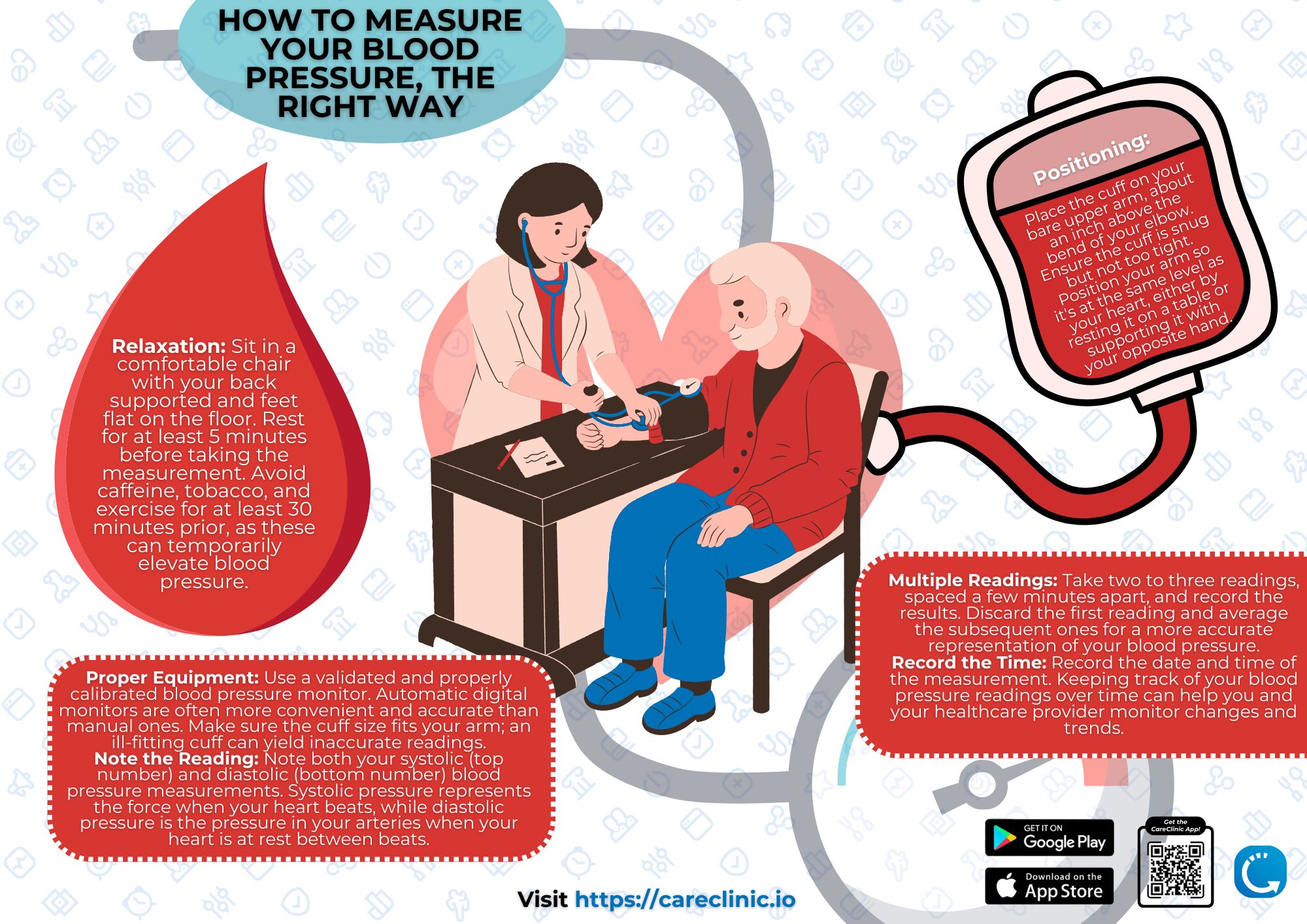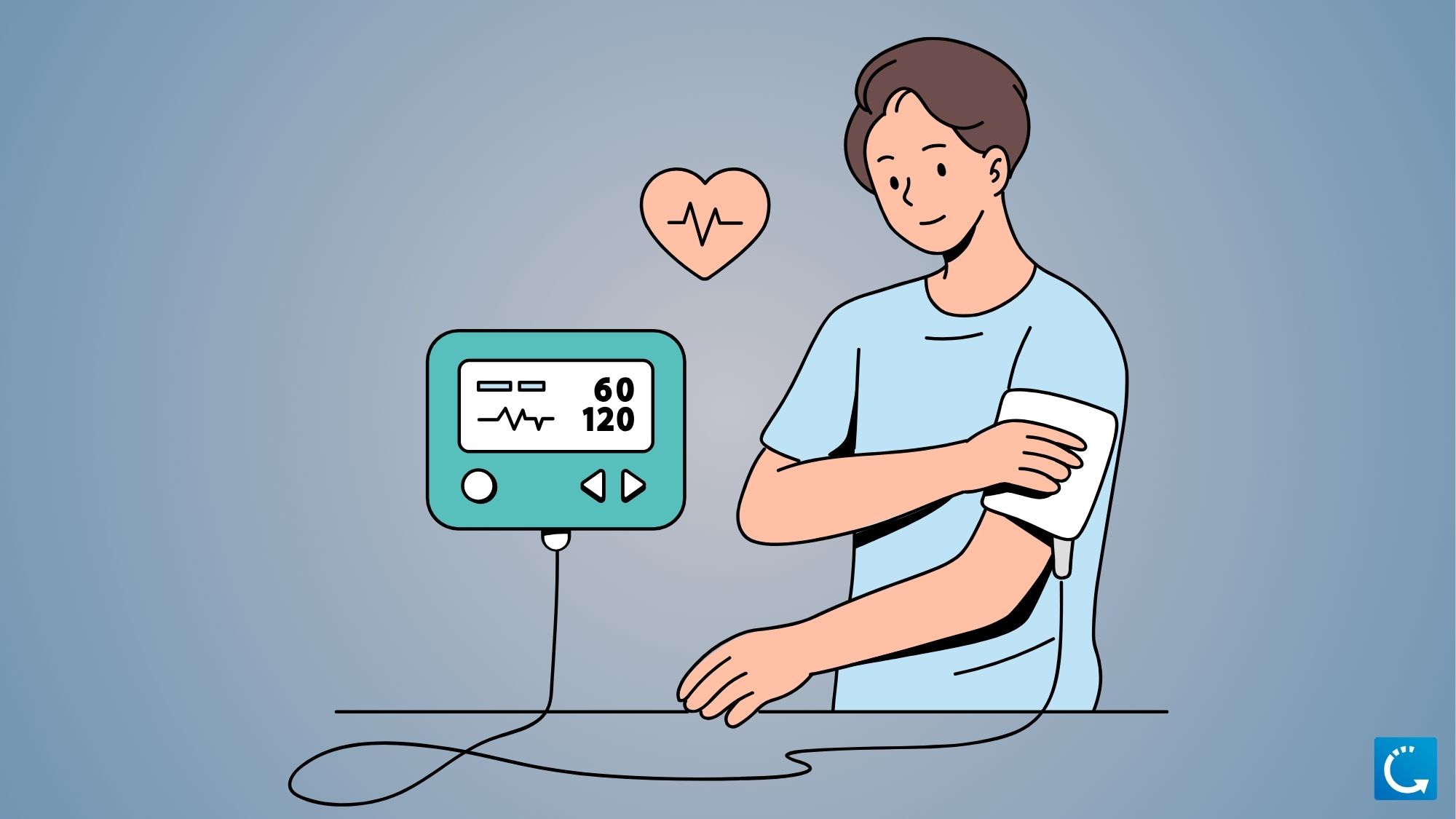
High blood pressure is a major health issue. Often being diagnosed when it is too late or in case of life-threatening complications. Such as heart attacks or strokes. Self-monitoring of blood pressure values can keep these risks down to a minimum. Allowing one to stay healthy. We explain how to measure your blood pressure the right way so you always record the correct values.
Measuring the blood pressure might seem like an easy task to achieve. But, in reality, even the smallest mistake can lead to false readings. There are specific steps that one has to follow, in order to ensure correct measurement. Moreover, one must be aware of the healthy blood pressure values and take these into account with each reading.
Should I consider measuring my blood pressure?
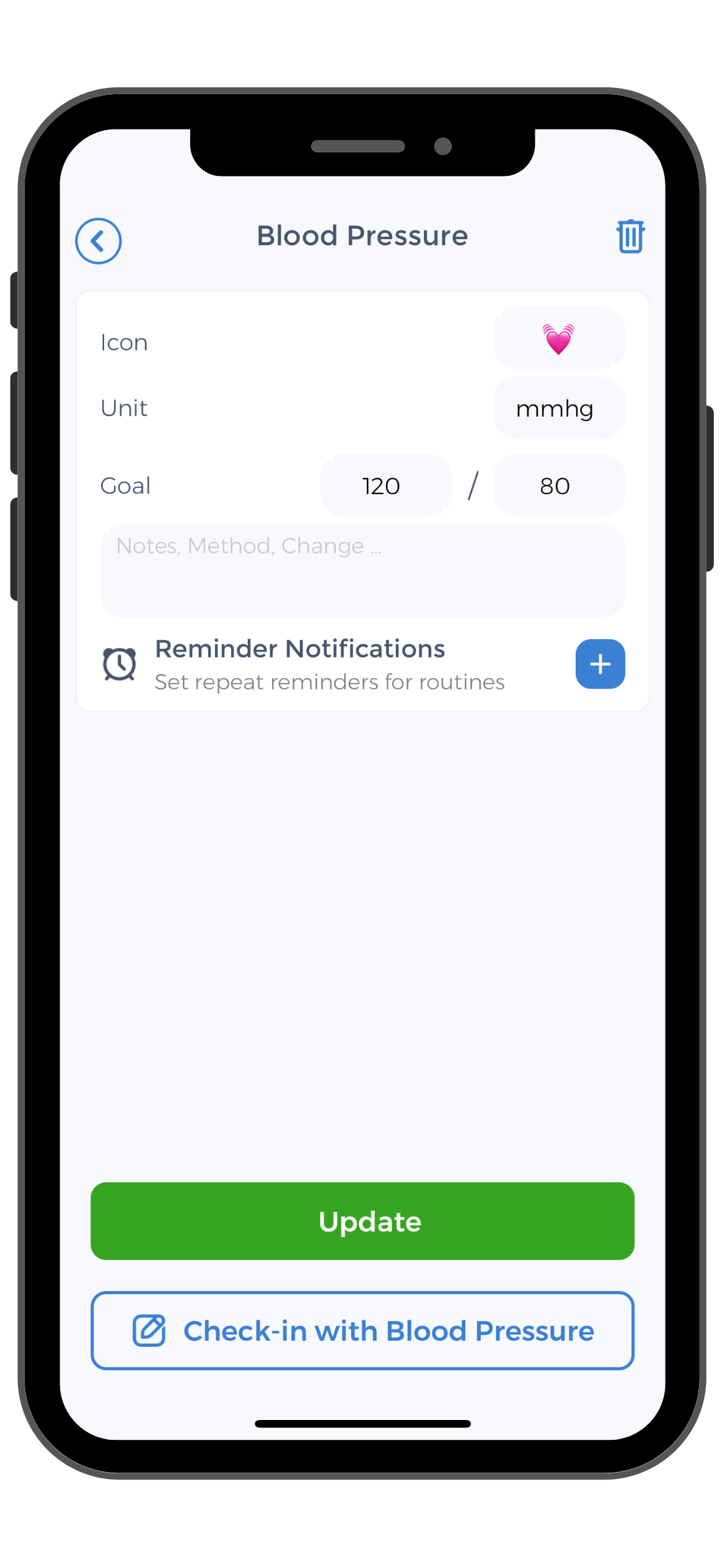 The modern lifestyle has definitely contributed to the development of high blood pressure. People eat more than it is necessary and prefer a sedentary lifestyle, with little exercise being part of their daily routine. Obesity is associated with high blood pressure, as well as aging and unhealthy lifestyles.
The modern lifestyle has definitely contributed to the development of high blood pressure. People eat more than it is necessary and prefer a sedentary lifestyle, with little exercise being part of their daily routine. Obesity is associated with high blood pressure, as well as aging and unhealthy lifestyles.
If you find yourself part of the picture, you should consider self-measurement of blood pressure values. Many people are unaware of the fact that they suffer from high blood pressure. Especially since this condition rarely causes any noticeable symptoms. As there are no complaints to worry about, one does not even think about measuring his/her blood pressure on a regular basis.
According to medical specialists, high blood pressure is one of the most dangerous conditions. This is because it fails to cause visible manifestations until there is too late and one suffers from life-threatening complications. Left untreated, it causes the blood vessels to calcify at a rapid rate. Which in turn will place pressure on vital organs. Hence, the risk of stroke, heart attack or kidney failure. Even eyesight can be affected by high blood pressure. (R).
Why should I learn how to measure my blood pressure?
Even though you can go to the doctor for the measurement of the blood pressure, you have to understand that you can perform this on your own. All you need to do is learn how to measure blood pressure in the correct manner. Do not think that all it takes is putting your cuff around your arm and reading those values.
As you will see below, there are specific steps that have to be pursued. It might take some practice but it is all worth it, as you will reduce the risk of errors during measurement. With practice, you can be certain that your values are correct and that you are not at risk of hypertension. Or, if your values are high, you can talk to the doctor about potential lifestyle changes and medication. (R)
Are there any red flags indicative of hypertension?
Even though high blood pressure does not cause perceivable symptoms, there might be some red flags that could direct you towards seeking a diagnosis. People who suffer from high blood pressure often complain of headaches, lightheadedness, and agitation. They might also experience heart palpitations, nervousness, and insomnia.
Even if you are not suspecting hypertension, it is a good idea to measure your values on a frequent basis. You might have oscillating values, in accordance with how stressed or tired you are. Oscillating blood pressure is just as risky, being associated with stroke quite frequently. Upon noticing such problems, the doctor can recommend a suitable treatment.
Keep in mind that even slightly high values can affect the health of the vessels and vital organs, so you should seek out treatment as soon as you discover your blood pressure to be elevated. The highest risk associated with high blood pressure is severe cardiovascular disease. (R)
Normal blood pressure values – how to be certain that you are suffering from hypertension
As previously mentioned, you should not rely on the fact that high blood pressure leads to noticeable symptoms. Most of the times, the complaints are unspecific and it might even drive one towards the wrong diagnosis. Measuring blood pressure is the only way to ensure that you do not suffer from hypertension.
The blood pressure has two values, meaning the systolic (upper) and diastolic (lower) pressures. Both are measured in mm Hg. The systolic pressure refers to the pressure existent in the arteries when the heart contracts (blood is pumped from the heart into the arteries). The diastolic pressure, on the other hand, refers to the pressure in the arteries when the heart is relaxed (fills again with blood).
The healthy blood pressure values range between 120-129 (systolic) and 80-84 (diastolic) mm Hg. The risk of hypertension is considered to include values varying between 130-139 (S) and 85-89 mm (D) mm Hg. Any values over 140 and 90 mm Hg are considered hypertension. It is also essential to remember that the normal values can slightly vary, in accordance to one’s age, pre-existing conditions and different risk factors (such as the presence of cardiovascular disease). (R)
Here’s a chart summarizing normal blood pressure values and hypertension:
Common mistakes when measuring blood pressure
In order to find out whether your blood pressure is within normal limits or not, you have to be able to measure it correctly. This is not an easy process, as many people believe. If you make a mistake, your results might be different than in reality and you will continue to believe that you do not have high blood pressure.
Retracting your sleeve & wearing a thick sweater
The habit of retracting one’s sleeve during measurement can lead to false readings so you might want to wear a T-shirt instead. You should also refrain from putting the cuff over a thick sweater, as this can influence the actual reading as well.
Measuring your blood pressure after a meal
Once again, this can lead to false readings. When we eat, a lot of blood is directed towards the gastrointestinal system and especially the stomach (so as to ensure adequate digestion). As there will be less blood in the arms, you might obtain a lower blood pressure value (which is not accurate). The best time to measure your blood pressure is in the morning, before eating.
Measuring only one arm at first
If you have just begun measuring your blood pressure, you should not stick with just one arm. It is recommended to measure the blood pressure on both arms, comparing the values obtained. You will see that one of the arms has a higher value, so that should be the decisive arm for future measurements. For example, the right-handed individual might end up measuring the blood pressure on the left arm.
Measuring after alcohol and caffeine intake
It is worth knowing that both caffeine and alcohol can influence blood pressure readings. Any caffeine-based beverage will cause the blood pressure to rise, while alcohol initially lowers blood pressure but, on a long term basis, it leads to increases as well. Thus, it is not recommended to measure your blood pressure after having consumed alcohol or coffee. Moreover, the chronic consumption of alcohol is associated with high blood pressure, so you should avoid alcohol abuse at all costs.
Measuring with a full bladder
A full bladder can lead to an increase in blood pressure, as everyone knows that the kidneys and urinary system play an important role in the circulation of blood. For the most accurate reading, you should go to the toilet before measuring your blood pressure.
Speaking during the actual measurement
If you ever went to the doctor’s office to have your blood pressure measured, you are probably familiar with the “no speaking” rule. This is because speaking can actually distort the blood pressure, affecting the reading in question. It is for the best to stay silent, even when you are performing the measurement.
Measuring when stressed or pressed for time
Deciding to measure your blood pressure when you have a pressing deadline, lots of errands to handle or you are late for work can lead to inaccurate readings. You should avoid any measurements if you are in a hurry or too stressed. Instead, opt for measurements when you are relaxed and have enough time. These will be the most accurate, reflecting your actual blood pressure values.
Varying measuring times
Any physician will tell you that the blood pressure should be measured at the same time every day. The most accurate reading can be obtained in the morning, before breakfast. You should also refrain from drinking coffee or taking any medication that might influence blood pressure values (such as antihypertensive drugs).
As previously mentioned, high blood pressure is dangerous and this is why you should monitor your values at regular intervals. If you suspect oscillating blood pressure to be an issue, you can measure it again in the evening. (R)
How to measure your blood pressure correctly
The first thing that you need to do is sit down and relax for several minutes, as this will bring the blood pressure back to normal (make sure that your values are not influenced by various activities). For the best measurement, sit relaxed in a chair, with the feet placed on the floor.
Ensure that the cuff fits your arm size and measure the arm circumference before purchasing a measurement device. If the cuff is either too small or too large, it can lead to incorrect readings. Ensure that the cuff is at heart level – place it about two fingers above the elbow and flex the arm for added comfort (a raised pad can also be used).
It is essential to measure the blood pressure values on a regular basis, documenting the values. Both you and your doctor can review these values and get a clear picture of your blood pressure status. (R)
CareClinic health app, is the ideal tool for documenting blood pressure values
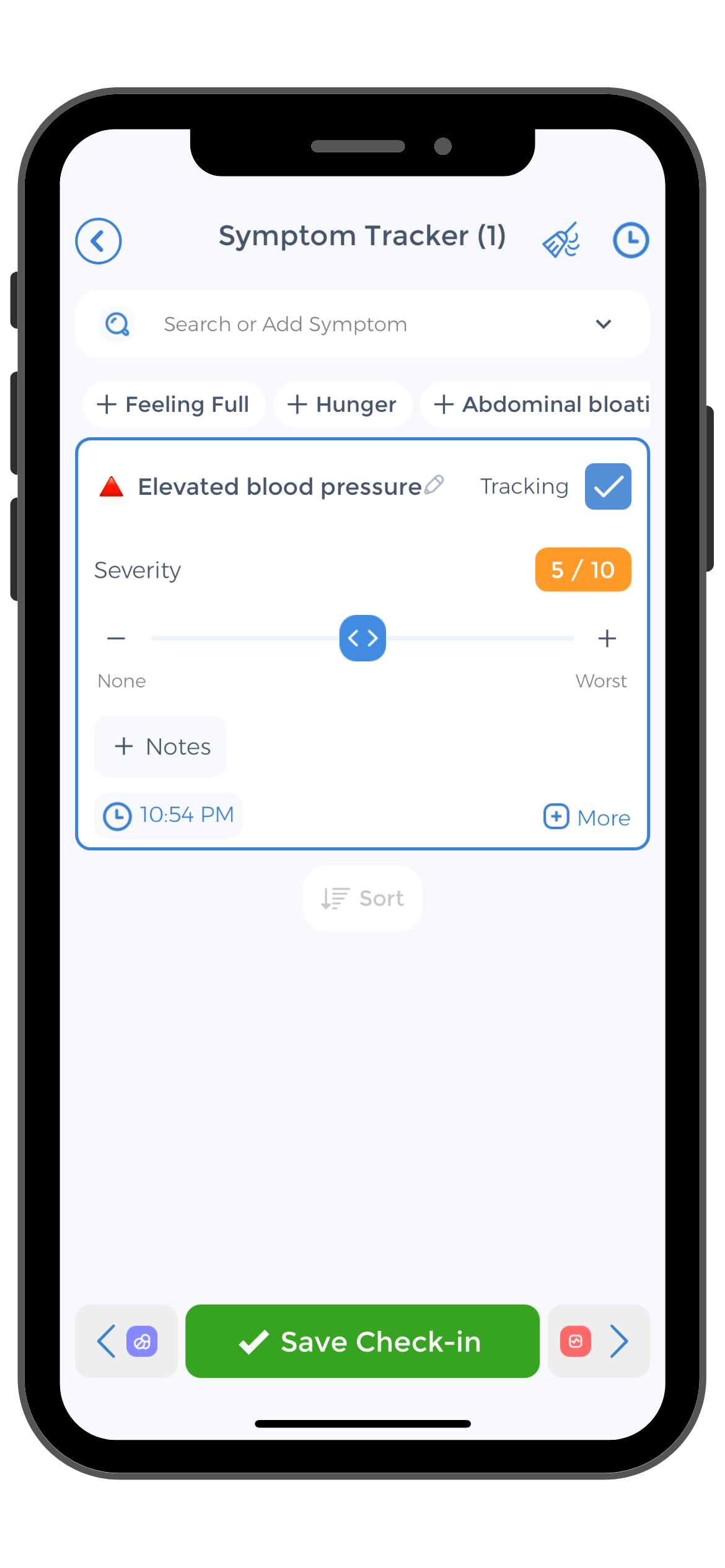 Documenting the blood pressure values can be done the traditional ways, using pen and paper. However, you have other alternatives available, taking advantage of modern technology. The CareClinic health app can be used to record blood pressure readings and view regular reports with regard to such matters.
Documenting the blood pressure values can be done the traditional ways, using pen and paper. However, you have other alternatives available, taking advantage of modern technology. The CareClinic health app can be used to record blood pressure readings and view regular reports with regard to such matters.
The reports generated by the application can be shared with the treating physician. Based on these reports, the doctor can get a comprehensive view of your blood pressure status and decide on the best anti-hypertensive agents for your current values (for example, he might prescribe beta-blockers).
Aside from documenting blood pressure values, you can use CareClinic’s health app to set up medication reminders. You can record any symptoms experienced and the associated treatment plan. Last, but not least, you can write about your condition in the health journal and feel in control with regard to your health. The application is free to use, and it is available on both iOS and Android, start by signing up here.


